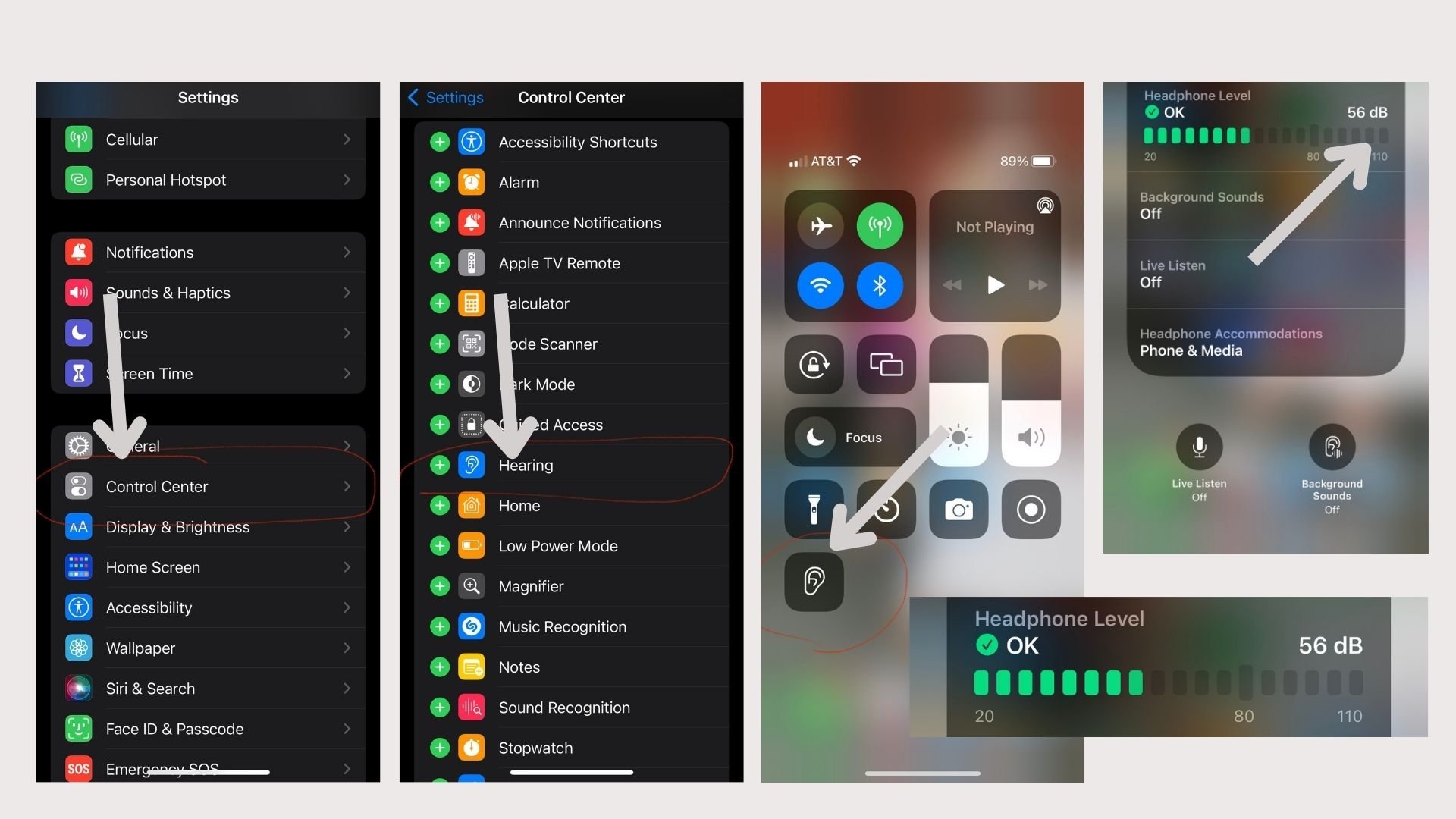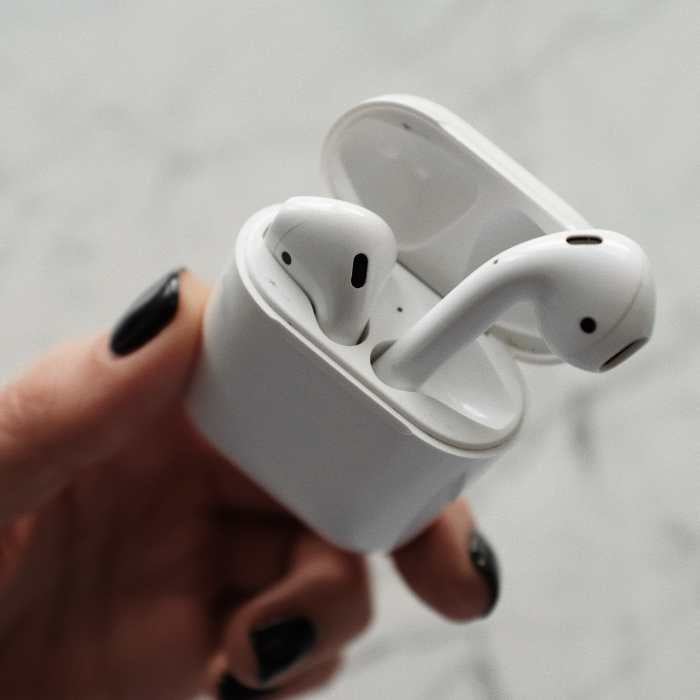Key Takeaways
- Turning the volume all the way up on your AirPods can cause hearing damage.
- Fortunately, AirPods also offer a way to monitor your volume and keep the volume within safe limits.
- The World Health Organization recommends keeping daily headphone listening to 60 minutes or less. Try to keep the volume below 70 dB.
👋 Want to check your hearing?
Try this free hearing test. It takes about 5 minutes and returns a chart that reveals the shape of your hearing. There’s also a helpful video that explains your results.

Apple sells around 100M AirPods a year, but if you’ve been to an airport, cafe, or shopping mall lately, you already know that. AirPods are everywhere, and we keep our AirPods in all the time. Podcasts, audiobooks, Spotify, YouTube, and TikTok, have made our ears some pretty valuable real estate.
Between true-crime podcast binges, you might wonder what all this AirPod time is doing to our hearing health?
The answer is a buzzkill. According to the American Osteopathic Association, approximately one in five teens today will experience some form of hearing loss — a rate about 30 percent higher than it was 20 years ago.
“Millions of teenagers and young people are at risk of hearing loss due to the unsafe use of personal audio devices…” said Dr. Bente Mikkelsen, WHO Director for the Department for Noncommunicable Diseases.
Before you throw out your AirPods and delete your life’s work on Spotify, experts have some suggestions to make AirPod listening safer.
First, let’s talk about decibels.
Most people have experienced ringing in their ears after a loud concert or fireworks. We know it was loud, even too loud, but it’s hard to quantify without understanding a bit about the science behind sound.
Fortunately, you don’t need to be a sound engineer or audiologist to understand the thresholds for healthy hearing. The CDC published research on everyday noise levels and how they can affect our hearing. Here’s a breakdown:
Low volume sounds - Unlikely to cause hearing damage
- Normal breathing 10 dB
- Ticking watch 20 dB
- Soft whisper 30 dB
- Refrigerator hum 40 dB
- Normal conversation 60 dB
Mid volume sounds - Can be annoying but unlikely to cause hearing damage
- Washing machine 70 dB
- City traffic (inside the car) 80–85 dB
- Airplane in flight 80 dB (can cause damage for flight crew)
High volume sounds - Can damage your hearing
- Motorcycle 95 dB
🕑 Damage after about 50 minutes of exposure - Approaching subway train, car horn and sporting events 100 dB
🕑 Hearing loss possible after 15 minutes of exposure - The maximum volume level for personal listening devices; a very loud radio, stereo, or television; and loud entertainment venues (such as nightclubs, bars, and rock concerts) 105–110 dB
🕑 Hearing loss possible in less than 5 minutes - Shouting or barking in the ear 110 dB
🕑 Hearing loss possible in less than 2 minutes - Standing beside or near sirens 120 dB
🕑 Immediate pain and ear injury - Firecrackers 140–150 dB
🕑 Immediate pain and ear injury
Tip: You can check the decibels of your environment by using an app on your phone like dB Sound Level Meter. Don’t trust that public venues control for safe sound levels. I’ve tested numerous restaurants and bars that dangerously exceed 100dB for sustained periods.
How to measure decibel levels through your AirPods.
AirPods are convenient for commutes, plane rides, and study sessions at a local cafe, but those environments most often lead to dangerously loud AirPod volume levels. Here’s why:
As background noise levels rise, you’ll naturally turn up the volume to hear your music or podcast more clearly. The problem is that your ears become accustomed to the loudness, and you lose the sensation that your music is too loud.
A typical airplane ride produces a steady stream of 80 decibels of sound, and 80 decibels on its own is at the top of a healthy listening threshold. Now add in your AirPods, and you are almost sure to subject your ears to unhealthy sound levels.
You can quickly check the dB level of your AirPods by taking the following steps:
Go to Settings on your iPhone > Click “Control Center > Add “Hearing” > Now swipe up or down (depending on your phone) for your control center and tap the ear icon. If you are wearing your AirPods, you should see a meter that indicates how loud your headphones are in dB. Stay in the 60s or 70s for safe listening.

Give your ears a break.
AirPods were released in 2016 and we have a lot to learn about the newly emerging sonic culture and how it might impact our health. The World Health Organization suggests that people listen through their headphones for just one hour per day. Between Zoom calls, podcasts and New Music Friday that seems like a tall order but it serves as a reminder that our ears need a break.
I sat down our audiology lead Dr. Amy Sarow to get her advice on headphone volume. You can watch that conversation here.







